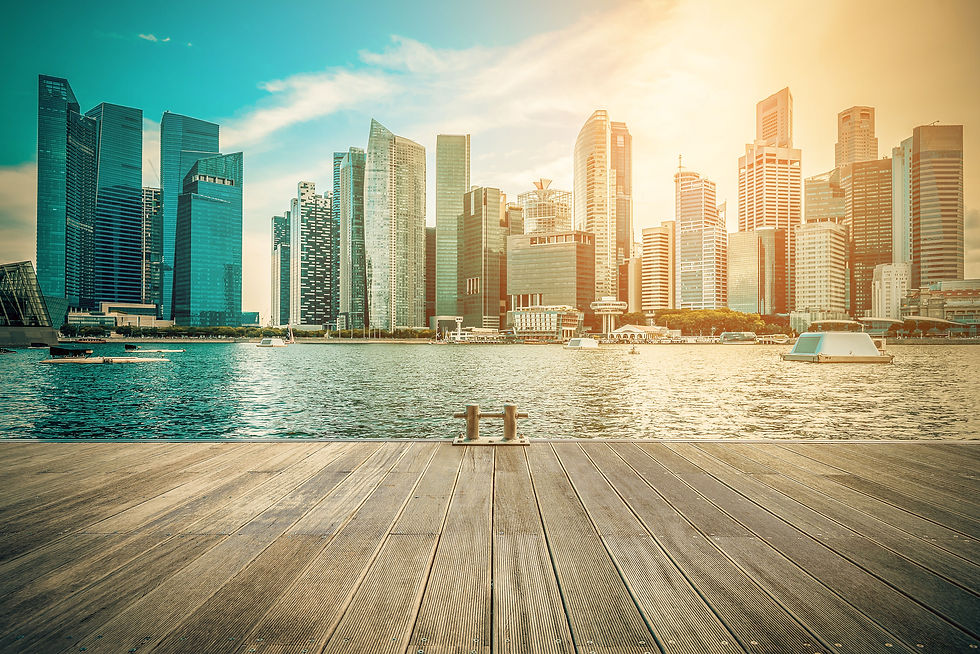Snapshot: Singapore’s transition to a net-zero power sector in 2050
- Green Denmark in Southeast Asia
- May 11, 2022
- 3 min read
After commencing a study of how to reach a net-zero energy sector in Singapore more than a year ago, the Energy 2050 Committee released its report in March 2022. The report lays out the committees’ views on decision points, strategic choices, and key considerations for Singapore.

How can Singapore reach a net-zero energy sector by 2050, and is it even possible to reach this goal while lacking natural resources and while being renewable energy disadvantaged? These are some of the questions that are addressed in the new report “Charting the Energy Transition to 2050”.
The report fortunately concludes that it is technically viable for Singapore to reach a net-zero energy sector by 2050, however it is a complicated task in which other factors such as energy security and affordability play a pivotal role. Furthermore, rising electricity demand following increased economic growth works against the ambition to lower carbon emissions. Following the report, it is clear that the energy transition requires bold changes on par with technological trends and other global developments.
Charting the Energy Transition to 2050
In order to reach a net-zero energy sector by 2050, early efforts by the government, industry stakeholders and consumers are needed. The Energy 2050 Committee puts together a set of recommended strategies with realistic initiatives that are assessed to entail clear benefits for Singapore. These include grid strategies, supply strategies, and demand strategies:
Strategy 1: Pursue the adoption of electricity imports to access cleaner and cost-effective energy sources beyond Singapore’s borders.
Strategy 2: Develop the use of low-carbon hydrogen for power generation to decarbonise the power sector.
Strategy 3: Maximise solar deployment and use ESS to manage solar intermittency.
Strategy 4: Pre-position Singapore for new low-carbon supply alternatives.
Strategy 5: Leverage carbon markets to address residual and hard-to-abate carbon.
Strategy 6: Create a multi-layered grid to manage the growth of DERs and improve grid reliability.
Strategy 7: Leverage digital technologies to enhance grid planning and operations.
Strategy 8: Actively manage the growth of demand to better manage the rollout of low carbon options and keep energy costs affordable.
Strategy 9: Shape end user consumption to optimise the power system.
On the basis of the patterns of technology advancement in the future, the report presents three different scenarios that describe the possible pathways to net-zero emissions in Singapore. These include different energy supply mixes and are described below:
Clean Energy Renaissance: The Clean Energy Renaissance-scenario describes “a world that rallies together against climate change and encompasses progress in technology and concerted collective action. Both energy and digital technologies develop rapidly, while strong global cooperation continues through the next three decades. Under these circumstances, Singapore decarbonises smoothly and achieves a diversified supply mix in 2050”. Electricity imports and hydrogen are the dominating sources of energy in this scenario.
Climate Action Bloc: The Climate Action Bloc-scenario entails a situation where “countries band together for climate action in a supportive geopolitical environment that favours global solutions but technology advancement is slow, especially in energy technologies. Singapore arrives at 2050 with electricity imports as a mainstay source of supply while waiting for low carbon technologies to mature”. In this scenario, more than half of the energy supply comes from energy imports, while hydrogen, natural gas, solar, and geothermal energy sources are used as supplements.
Emergent Technology Trailblazer: The Emergent Technology Trailblazer-scenario sees “a world that is fragmented geopolitically while technology development accelerates closer to 2050. Under these circumstances, Singapore makes proactive investments in new technologies to decarbonise and banks on hydrogen as its main source of supply”. In this last scenario hydrogen makes up half of the energy supply, while electricity imports satisfy a quarter of the energy demand. The rest is secured through a mix of solar, geothermal, and nuclear energy sources.
Singapore’s energy transition will undoubtedly involve trade-offs, which need to be carefully studied and assessed. In some instances, more costly sources of energy may be utilized due to sustainability and energy supply concerns. Danish companies in the energy sector may wish to keep a close look at Singapore, since their expertise in green energy production can lead to business opportunities in the country over the coming years.
Read the full report here.
Contact the Royal Danish Embassy in Singapore for more information about business opportunities and how Denmark seeks to inspire green transition in Southeast Asia:
Mark Edward Perry
Head of Trade at the Royal Danish Embassy in Singapore
Phone: +65 9088 5567
Email: markpe@um.dk

Commentaires